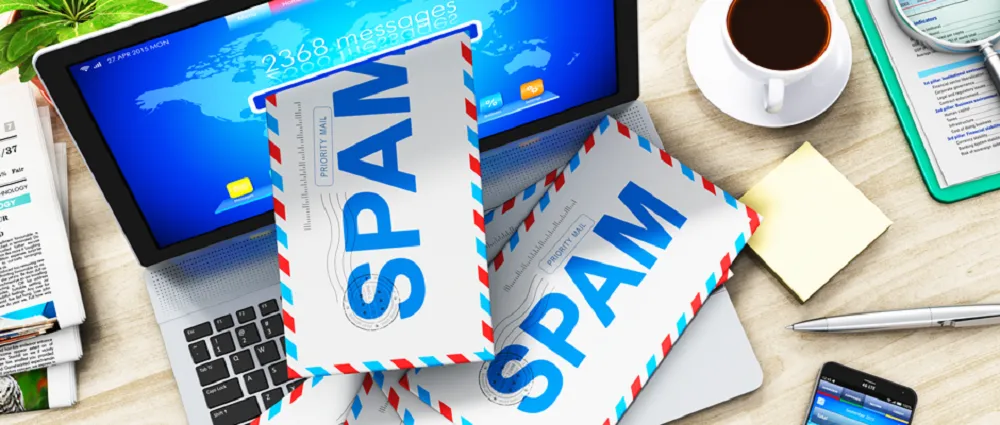What pops up in your mind when you hear the word Spam? Miracle pills from web pharmacies, requests for cash from “princes” of different countries, or maybe the food, Spam? This article concerns Spam with lowercase “s.” While many of us enjoy food Spam, nobody desires to be tricked into losing cash or downloading malware because of the other kind of Spam.
Spam is annoying; however, it’s a threat as well. While several people may suppose we’re savvy enough to identify any form of it, spammers often update their ways and messages to trick potential victims. We’re all perpetually vulnerable to cybercriminals, and the proof is in your inbox.
So, read on to find out what Spam is, how to identify it, and how to shield yourself against it.
Table of Contents
What is Spamming in Cyber Security
Spamming is using messaging systems like emails and different digital delivery systems, and broadcast media to send unwanted bulk messages indiscriminately. Spamming is also applied to various media like web forums, instant electronic communication, mobile text messaging, social networking spam, junk fax transmissions, tv advertising, and sharing network spam.
What are the types of attacks in Cyber Security?
Spammers use several varieties of communication to bulk-send their unwanted messages. A number of these are marketing messages peddling uninvited merchandise. Some other spam messages may unfold malware, trick you into divulging personal info or scare you into thinking you need to pay to escape the trouble.
Email spam filters catch several of those forms of messages, and phone carriers usually warn you of a “spam risk” from unknown callers. Some spam messages get through, whether or not, via email, text, phone, or social media, and you want to be ready to identify them and avoid these threats. Below are some types of Spam to watch out for.
Phishing emails
Phishing emails are a kind of spam cybercriminals send to several users, hoping to “hook” several people. Phishing emails trick victims into forgoing sensitive info like website logins or credit card info.
Email spoofing
Spoofed emails mimic or spoof an email from a legitimate sender and tell you to take some action. Well-executed spoofs can contain acquainted branding and content from a well-known giant company like PayPal or Apple. Common email spoofing spam messages include:
- A request for payment of an impressive invoice
- A request to verify your account or reset your password
- Verification of purchases you didn’t make
- Request for updated billing info
Tech support scams
In a tech support scam, the spam message indicates that you have a technical drawback, and you ought to contact tech support by calling the phone number or clicking a link in the statement. Like email spoofing, these forms of Spam usually say they’re from a big technology company like Microsoft or a cybersecurity company like Malwarebytes.
Email Spamming in Cyber Security
Email spam is usually disguised in a shot to fool any anti-spam package you may have put in. Spammers attempt to find ways to switch or conceal their messages to achieve this, like putting blank spaces between letters or replacing critical letters with numbers or characters so spam filters won’t be triggered. While your anti-spam package might not continually be ready to catch this, you ought to be prepared to identify it. Spam could also bombard you with unsolicited messages, which can embody inappropriate or offensive adult content. Spam can also contain malware or be a part of a “phishing” scam.
Who is responsible for Cyber Security
If you’re mentioning your CIO or IT Manager of your company, you may be partly correct. Despite the forceful surge in cybersecurity incidents within the past few years, several organizations haven’t progressed from the ‘culture of accountability.
Although the CIO, or CISO, still carries primary responsibility for Cybersecurity in 85% of organizations, it’s the whole organization and everybody operating in the business who holds the secondary responsibility for it.
Cyberattacks are often targeted at anyone in the business. Over 90% of attacks are launched via email, phishing for info, malicious links in the email, or compromised attachments. They are usually targeted toward people with the most access or seniority in the business. They are more likely to supply helpful information to hackers if they prey on an attack. For instance, it’d be common to focus on somebody who has access to the payroll or the capability to sign off on expenditures.
So, the responsibility for Cybersecurity in your business sits with everyone. Business leaders and heads of departments need to amend the culture and outlook of individuals. Making Cybersecurity a shared responsibility and equipping businesses to participate in active decision-making can guarantee Cybersecurity becomes a culture inside the company.
Is spamming a cybercrime?
Spam is a crime against all users of the web since it wastes both the storage and network capacities of ISPs and is usually simply offensive.






You should be a part of a contest for one of thee best sires
on the internet. I will highly recommend this website!
I am sre this articlee has touched aall tthe nternet visitors, itss really really peasant piece
off wrikting on building up neww website.
I am really grateful to the owner of tis weeb site who has shared this wonderful
post it here.